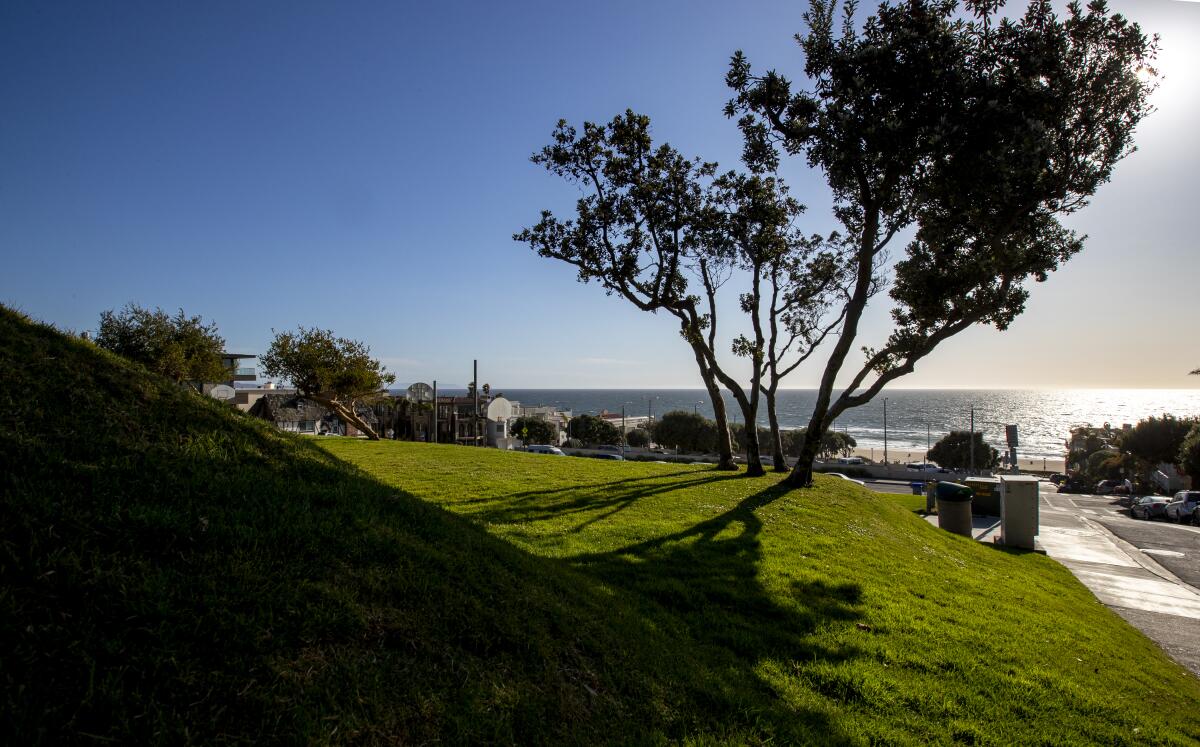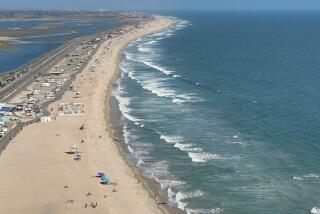What Manhattan Beach’s racist land grab really meant

- Share via
The question of how to acknowledge and repair racist crimes of the past has drawn more urgency in many communities, especially after last summer’s nationwide protests for racial justice.
In Los Angeles County, the wrong done to Willa and Charles Bruce and their descendants has captured a lot of media attention, perhaps because it involves a quintessential part of the California dream: a beautiful piece of oceanfront property on Santa Monica Bay.
In 1912, the Bruces, pioneering Black entrepreneurs, opened a popular oceanfront resort business in Manhattan Beach. Their business served a growing community of African American beachgoers, who also bought land and built cottages nearby.
Black visitors and property owners enjoyed the area, which was known as Bruce’s Beach, until they were chased out in 1924 by white city officials in a racist, anti-Black land grab through an eminent domain proceeding that took the land for a park.
Recently, some county officials have raised the possibility of giving financial restitution or even returning the land to the Bruce descendants. The city of Manhattan Beach has struggled with this ugly history in recent years, and in 2006, it renamed the site of the razed resort Bruce’s Beach. This year, city residents have proposed placing new interpretive panels and artwork on the site to tell the story in a fuller fashion.
But the damage done was always deeper than the economic loss to the Bruces or the other families who were also driven out. The purging of African Americans from Manhattan Beach destroyed a vibrant social space.
Leisure and recreational places were important to Black identity, regional social networking, community building and economic development in an era of rigid racial segregation in much of the nation. They were more than vacation spots. They were places of respite from white harassment.
African Americans, like the Bruces, began moving in larger numbers to the Los Angeles area in the decades around the turn of the 20th century, joining a multiethnic community that included white people and people of color, as well as immigrants of many national backgrounds.
The majority of new Black migrants relocated from Southern states, often to escape the worst of Jim Crow-era racism, segregation and racial violence. Like others who moved to California, these migrants embraced the idea of the California dream — a lifestyle in picturesque outdoor settings and new opportunities. And they were self-confident and sometimes militant in demanding their rights as citizens and consumers.
But in California, they also faced discrimination that prevented African Americans from using various public spaces and buying land in many areas. Building resort businesses and carving out leisure communities was one way Black entrepreneurs, such as the Bruces, responded to those restrictions.
In addition to Manhattan Beach, African Americans invested in real estate in Santa Monica’s south beach neighborhoods and the Bay Street beach, Eureka Villa in the Santa Clarita Valley, in Riverside County’s Lake Elsinore and Corona’s Parkridge Country Club, and a few other places.
These were sites of pleasure but also a powerful challenge to anti-Black public policies and private practices that flourished in Southern California for different periods and in varying forms between the 1900s to the 1960s. In Los Angeles, recreation and relaxation were essential components of liberty — and contested ground in the struggle for civil rights and freedom.
Equally important, Black experiences of these leisure spaces in California and around the U.S. — and the attention they gained in Black newspapers of the era — helped to create a public memory that offered African Americans broader visions of themselves and their communities.
Black Angelenos, in their ambitions and initiatives, challenged the era’s white supremacist concepts as they asserted their determination to participate in popular recreational, cultural and social trends that were considered modern by the 1920s.
In exurban communities such as Manhattan Beach, African Americans bought property so they could control their enjoyment of these activities. In doing so, they were also countering the power of white people in labeling African Americans as laborers and as inferior. At the same time, Black Angelenos, like white residents, helped to promote the consumption of leisure as “a lifestyle” in the region’s identity.
The painful history of Bruce’s Beach shows how much racism determines who gets to live the California and American dreams. Appropriately, that spot became a site of reflection and remembrance in 2020, during a national moment of racial reckoning.
How the city of Manhattan Beach will account for the generational loss suffered by the Bruce family is yet to be determined. But the damage done to the African American community by the city’s action in 1924 has contemporary consequences, which shape the present as well as the future.
Alison Rose Jefferson is a scholar in residence with the Institute for the Study of Los Angeles at Occidental College and author of “Living the California Dream: African American Leisure Sites during the Jim Crow Era.”
More to Read
A cure for the common opinion
Get thought-provoking perspectives with our weekly newsletter.
You may occasionally receive promotional content from the Los Angeles Times.









